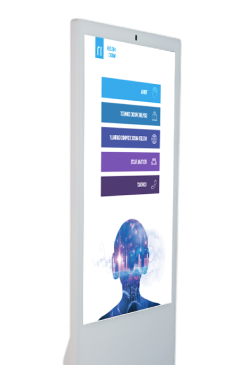

Event Solutions

Our Work

How to Successfully Use QR Codes with Touch Tables
One of touch tables' greatest strengths is its aptitude to interact and mix with different types of technology. Instead of becoming sour, irrelevant, and less effective, it can transform and evolve by need, or preference into a tool that works the way both the back-end individual and the end-user need it to function. Incorporating QR codes is not new to the world of touch tables, as both tools have engaged well in the past to serve enterprise objectives and smooth the way for data sharing to the end-user. Today’s market, however, has ushered in an even better atmosphere for QR codes and digital signage to intensify an organization’s success in an assortment of ways. So let’s start by talking about what QR codes are, and how they work. What are QR Codes Used for? QR codes have been around for a while. They’ve been used for years in several different capabilities by a variety of businesses. A QR code is a slice of technology that smart devices “read” to learn where they need to take their user. They work equally to a barcode you would see on a cereal box or soda can. You might see them on a business card, a flyer, a sign, or dozens of other places. They may encompass links to a website or landing page, an email address, or a price cut or promotion offer. Users can download one of numerous QR code reader apps to be able to use QR codes. Anybody with a smartphone can swiftly scan a QR code to achieve different tasks, such as:
- Access wayfinding maps via link downloads
- Link to menus, spa services, or program times
- Use it to interactively engage
Using QR Codes with Touch Tables
Touch Table software and QR codes are an understandable marriage, particularly during the COVID-19 disaster. Companies who already use touch tables can benefit from also incorporating QR codes. Some examples of how QR codes and touch tables work together to effectively convey messages while reducing the need for users to touch communal surfaces are: Access menus. End-users can quickly scan a QR code and receive a menu on their mobile device – no internet connection needed, no app to download, and no printed materials. Get a map. For wayfinding instead of grouping around the large physical maps with other customers. Give patrons the ability to get promotions they see on the digital signage screen right to the phones in the form of a coupon. Offer contests for either patrons or employees to join by scanning a QR code. Publicize the winner on the digital signage screen to build enthusiasm. Doctor’s offices can give each patient a QR code to scan that takes them to a billing landing page. They can pay their bill without needing to stand in line in a packed waiting room. Industries need to embrace technology and offer their personnel and patrons a safe and easy way to physically engage. There is a plethora of ways to mix QR codes and touch tables to accomplish the business goals, while keeping our regulars, patrons, patients, and workers safe and healthy.